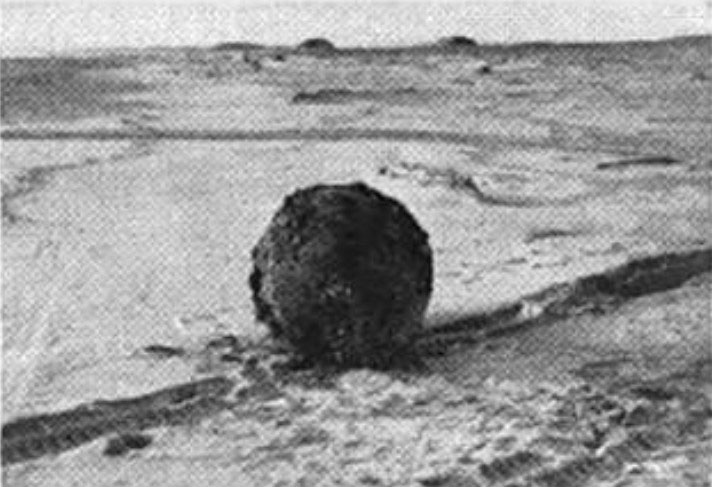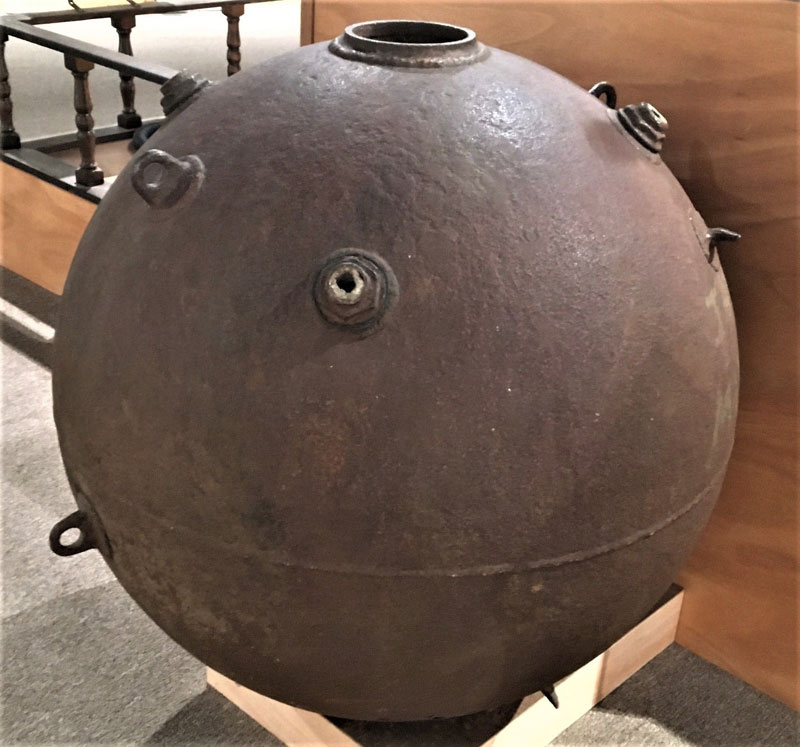The Terror of Post-War Mines on Beaches: Oregon, Washington Coast History (part two)
Published 02/16/22 at 5:02 PM PST
By Oregon Coast Beach Connection staff

Includes exclusive listings; some specials in winter
In Cannon Beach:
Includes rentals not listed anywhere else
In Manzanita, Wheeler, Rockaway Beach:
Some specials for winter
In Pacific City, Oceanside:
Some specials for winter
In Lincoln City:
Some specials for winter
In Depoe Bay, Gleneden Beach:
Some specials for winter
In Newport:
Look for some specials
In Waldport
Some specials for winter
In Yachats, Florence
Some specials for winter
Southern Oregon Coast Hotels / Lodgings
Reedsport to Brookings, places to stay; winter deals
(Westport, Washington) – After World War II, as nations slowly started to relax, there were still some dangers of marine-based mines from Japan floating around the waters of the Oregon coast and Washington coast. The deadly surprises meant for ships during wartime remained wandering the ocean, and some wound up here. (Above: a Japanese mine found near Westport in the '40s, courtesy U.S. Army)
This is part two of the story about post-war Japanese mines. Part one can be found here World War II Mines an Explosive Problem on Oregon / Washington Coast in '50s (part one), which talks about the sheer numbers in just the first two years after the war and how these were disarmed.
Starting in late 1949 and going into 1950, quite a few Japanese mines were found off the northwest coastline or on the beaches of Washington or Oregon, from Florence through Westport.
On New Year's Eve of ‘49, the Coast Guard cutter Balsam was hunting a floating mine about 50 miles off Tillamook / Oceanside when a major storm brought it back to port, according to Salem's Capital Journal.
Thus opens up an eventful chapter in mines along the Washington coast / Oregon coast: 1950 was a banner year for these.
A few days later a Japanese mine was detonated on a beach at Moclips, Washington. January 3 saw a squad come down from Fort Lewis to a spot a mile north of Moclips. Coast Guard crews from Grays Harbor had to stand guard over it for 21 hours after it was discovered.

Japanese mine in Florence, 1950 (photo Coos Bay Times)
A few weeks later, in late January, Gleneden Beach made the terrifying find - again. Another horned mine from Japan washed up in the sleepy village, and was under Coast Guard guard for a few days. On January 27, they called in a disposal officer from San Francisco, according to newspaper reports.
The Roseburg News-Review on February 2 reported Lt. JE Guentz came up from California, under the aegis of the 13th Naval District headquarters in Washington State. The mine washed up close to a set of homes, about 50 yards away – too close to explode it -so an ordnance crew came from California to help.
Guentz took out the detonator and booster, and then the crew had to reach into the bomb and scoop out the explosive power handful by handful. Some 220 pounds were removed manually.
“The powder was scattered in a long trench and ignited in 20 pound batches,” the newspaper reports. The mine, however, was estimated at seven to ten years old by this time, but it was still considered quite a threat and the powder inside was deemed volatile.
Gleneden Beach residents went to a movie during the operation, Naval officials said at the time.
Third time is supposed to be a charm, but it was more scares on March 13, 1950. A beach at Florence was the recipient of another mine, this time another Type 93 (there were four different models of these). Two men were dispatched from what appears to be Seattle to explode the mine by rifle fire.
The Coos Bay Times reported disposing of this specimen a “tricky job,” finding the deadly object covered in barnacles at Sutton Lake, just north of the Oregon coast town.
Chief gunner KE Taylor attached a charge to the object, then blew it up. However, there was no secondary explosion, as officials discovered the powder was too wet. They opened up the casing, cleaned out the material and scattered it, rendering it harmless.
On Thursday, August 3, 1950, the most dramatic of the Japanese mine incidents came to a close, as the 500-pound object was detonated at Westport on the Washington coast.
It all started 24 hours or so earlier, when the 73-foot fishing vessel Harold A. got a mine caught in its net. The ship, based out of Astoria, was somewhere over 16 miles off the Washington coast when the device was snagged in the mesh.
Forced to deal with it at sea, the four-man crew secured the mine to the deck, and then had to head high speed back to port in Grays Harbor in raging seas. The object wouldn't stay put, rolling and shifting often, losing two horns while on deck. Crewmen frantically worked to keep it steady. It must have been a stress level that was unimaginable.
Some $2,000 worth of fish was at stake, sitting below the mine in the ship's hold. That's an estimate in 1950 dollars: today that would be worth well over $23,000.
The following morning, Navy crew from Seattle showed up, and skipper Walt Minor of Astoria watched anxiously as the Coast Guard carefully removed it, then handing it over to the Navy. They successfully blew it up just offshore.
One newspaper capped the dramatic coverage with Minor found “uptown getting a drink, the Coast Guard said. He needed it.” See part one World War II Mines an Explosive Problem on Oregon / Washington Coast in '50s (part one)
Oregon Coast Hotels in this area - South Coast Hotels - Where to eat - Maps - Virtual Tours
Cannon Beach Lodging
Nehalem Bay Lodgings
Manzanita Hotels, Lodging
Three Capes Lodging
Pacific City Hotels, Lodging
Lincoln City Lodging
Depoe Bay Lodging
Newport Lodging
Waldport Lodging
Yachats Lodging
Oregon Coast Vacation Rentals
Oregon Coast Lodging Specials

(Above: a Japanese mine found in Gleneden Beach in '49, on display in Lincoln City. Courtesy North Lincoln County History Museum)
More About Oregon Coast hotels, lodging.....
More About Oregon Coast Restaurants, Dining.....
LATEST Related Oregon Coast Articles
Through 2 a.m. likely best, but some lights possible through dawn June 1 - 2. Space weather, astronomy
Rare Sperm Whale Stranding on N. Oregon Coast, Was Hit by Boat
Showing up near Gearhart, it will decompose naturally. Marine sciences
Coast Guard Barque 'America's Tall Ship' Coming to Portland Rose Fest, N. Ore...
Portland events: June 5 - 8; Astoria events June 13 - 15. Weather
Bright and Active Arietids Meteors May Hit Pre-Dawn Hours of Oregon, Washingt...
Look to east hour before sunrise and you may catch a show. Sciences, astronomy, weather
Why Now Could Be a Great Week for Spotting Killer Whales on Oregon Coast - Video
A good dozen documentations around Depoe Bay, Newport, Coos Bay, Bandon, Tillamook. Marine sciences
Summer Road Work, Traffic Issues Along Oregon Coast Include Astoria, Garibald...
Some daylight closures include bridges, OR 22, OR 18, OR 26, more. Travel tips. Seaside, Cannon Beach, Lincoln City. Travel tips
Pacific City Oregon Weather, 7-Day Forecasts, Live Conditions, Radar, Webcams...
Updated Constantly: Pacific City, Tierra Del Mar, Oregon Weather, Cams, Buoy Observations, Tides, Warnings - Alerts
Oregon Coast Has World's Oldest Harbor Seal, Celebrating 50 Years Soon
June 3 at Oregon Coast Aquarium in Newport. Newport events
Back to Oregon Coast
Contact Advertise on BeachConnection.net
All Content, unless otherwise attributed, copyright BeachConnection.net Unauthorized use or publication is not permitted



















































